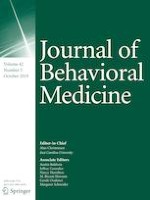03-01-2019
Unique contribution of education to behavioral and psychosocial antecedents of health in a national sample of African Americans
Gepubliceerd in: Journal of Behavioral Medicine | Uitgave 5/2019
Log in om toegang te krijgenAbstract
Education has demonstrated consistent links with many aspects of physical health and is theorized to relate to a variety of behavioral and psychosocial antecedents of health that may ultimately account for these associations. However, many of these associations and the extent to which they manifest specifically for African Americans have not been thoroughly tested. We examined associations of education—distinct from income—with established behavioral and psychosocial antecedents of health in a national sample of African Americans. Education favorably related to many behavioral (e.g., fruit/vegetable intake, lifetime smoking) and psychosocial (e.g., self-efficacy, personality traits, self-esteem, psychological well-being) antecedents of health, but not to all. Some evidence of stronger salutary relations of education for women was found. Results suggest that, for African Americans, education is generally favorably associated with an array of behavioral and psychosocial antecedents of physical health, partially explaining health disparities and providing a point of intervention moving forward.
